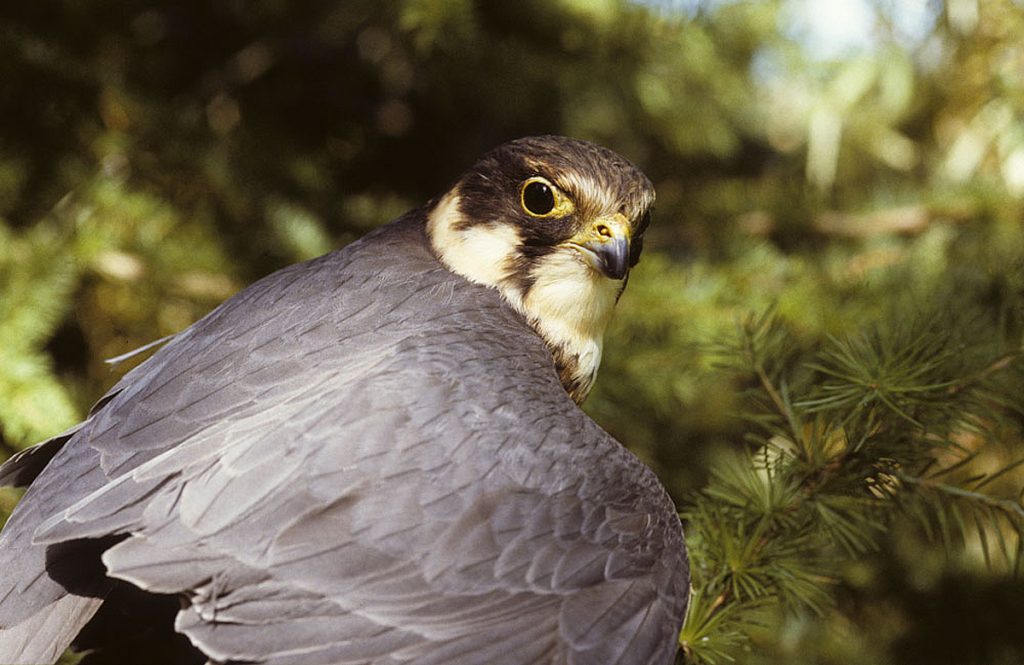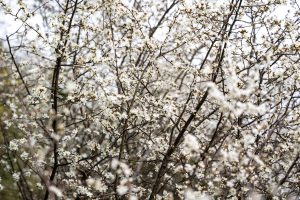What a Hobby!
Just the mere mention of a conifer forest in many parts of the UK does not get a positive response. But not everything is as gloomy as their interiors. After the First World War with a national shortage of timber, Eggesford in Devon was chosen as the site for the first forestry plantation in Britain. While nearby Haldon Forest came a close second. Over the following decades regimented rows of conifer trees appeared to be marching across many areas of previously open heath and moorland. As they matured first impressions were not good. Closely planted with dark and almost impenetrable interiors, the new fir and pine plantations developed rapidly. As the trees shot skyward, few native plants survived beneath this vast new roof of knitted needles.
Later planting by foresters introduced more variety. Today the Douglas Fir on Haldon reach over 20 metres high and are still growing strong. But where trees were thinned and management was more mindful of nature, the results proved to be nothing short of spectacular. Now, rather than simply replanting after felling, many areas are being left to regenerate naturally with native deciduous trees. The remaining conifers acting as a wind break.
While much of our native wildlife was not suited to living among towering conifer trees, some creatures thrived. Wood Ants do well in such places, as do the curiously equipped Crossbill. A bird, that has as their name suggests, a strange crossed beak finely adapted to remove seeds from cones. But perhaps the best treat here was the appearance of a rare fast-flying migrant bird, the Hobby. At a distance they can easily be confused with a Peregrine falcon and even lead a similar life style. Although a predator unlike the cliff nesting Peregrine, the Hobby tend to nest high in the branches of a towering conifer. They are also much smaller than their similar coloured cousin, only around the size of a Kestrel. But what the Hobby lack in size, they more than make up in their flight. Capable of accelerating fast, showing great agility, especially when chasing their favoured prey, a swallow or dragonfly, they are renowned for high-speed aerial manoeuvres.
At this time of the year as they start to migrate south for winter and the Hobby break their journey every few days to grab a quick meal. Vital as they must cross the Sahara Desert before reaching the forests of Central Africa, their winter feeding grounds. Here, in Devon Hobby can be most often glimpsed in late August, chasing dragonflies while dashing over a forest pond. But other prey require a different tactic. In our deep valley they hunt bats along the woodland edge. As the warmth of day fades in the gathering dusk, they employ an impressive looping flight. Suddenly climbing high before diving on their fast, erratically flying prey. Now that is a hobby worth watching.
Later planting by foresters introduced more variety. Today the Douglas Fir on Haldon reach over 20 metres high and are still growing strong. But where trees were thinned and management was more mindful of nature, the results proved to be nothing short of spectacular. Now, rather than simply replanting after felling, many areas are being left to regenerate naturally with native deciduous trees. The remaining conifers acting as a wind break.
While much of our native wildlife was not suited to living among towering conifer trees, some creatures thrived. Wood Ants do well in such places, as do the curiously equipped Crossbill. A bird, that has as their name suggests, a strange crossed beak finely adapted to remove seeds from cones. But perhaps the best treat here was the appearance of a rare fast-flying migrant bird, the Hobby. At a distance they can easily be confused with a Peregrine falcon and even lead a similar life style. Although a predator unlike the cliff nesting Peregrine, the Hobby tend to nest high in the branches of a towering conifer. They are also much smaller than their similar coloured cousin, only around the size of a Kestrel. But what the Hobby lack in size, they more than make up in their flight. Capable of accelerating fast, showing great agility, especially when chasing their favoured prey, a swallow or dragonfly, they are renowned for high-speed aerial manoeuvres.
At this time of the year as they start to migrate south for winter and the Hobby break their journey every few days to grab a quick meal. Vital as they must cross the Sahara Desert before reaching the forests of Central Africa, their winter feeding grounds. Here, in Devon Hobby can be most often glimpsed in late August, chasing dragonflies while dashing over a forest pond. But other prey require a different tactic. In our deep valley they hunt bats along the woodland edge. As the warmth of day fades in the gathering dusk, they employ an impressive looping flight. Suddenly climbing high before diving on their fast, erratically flying prey. Now that is a hobby worth watching.



